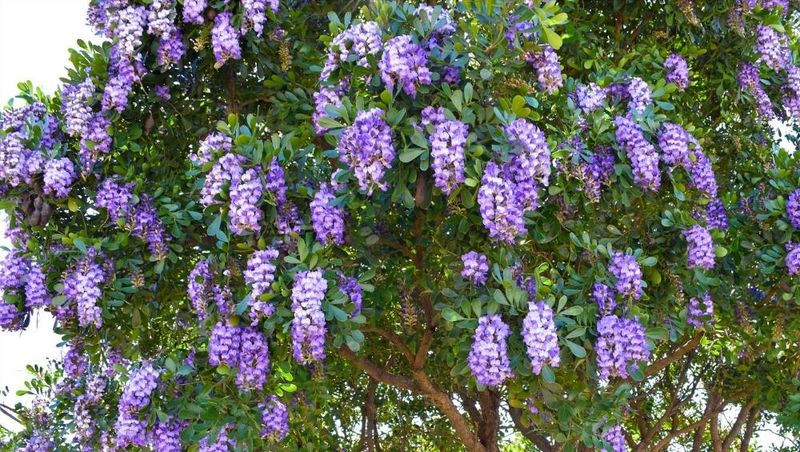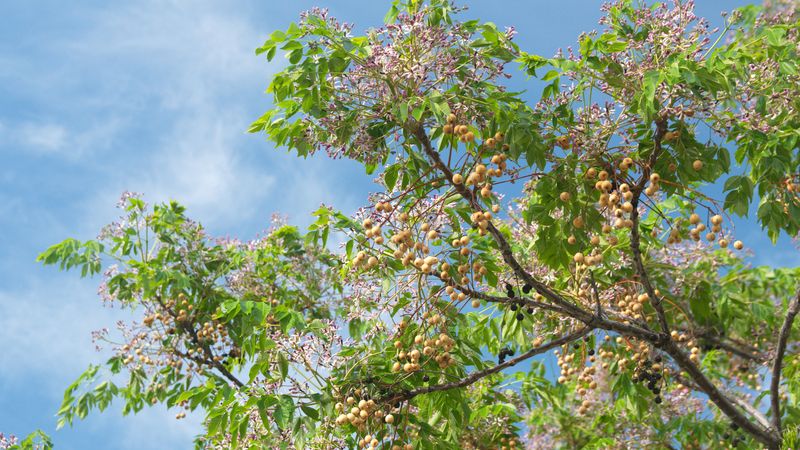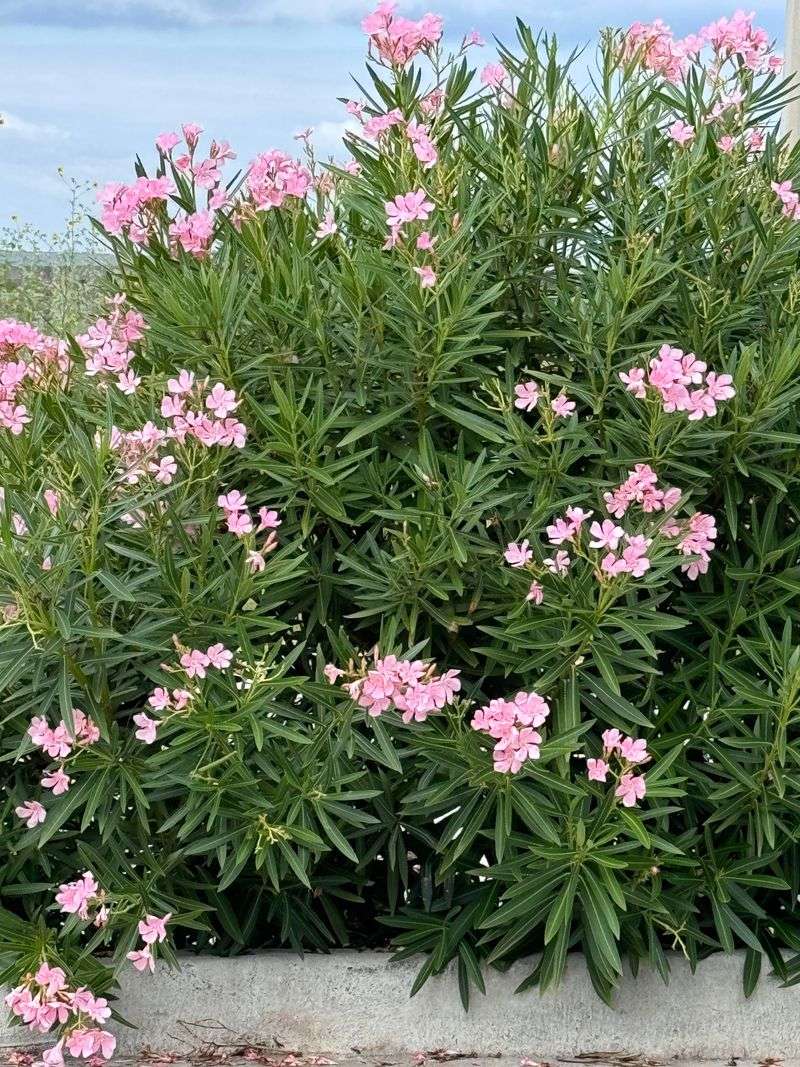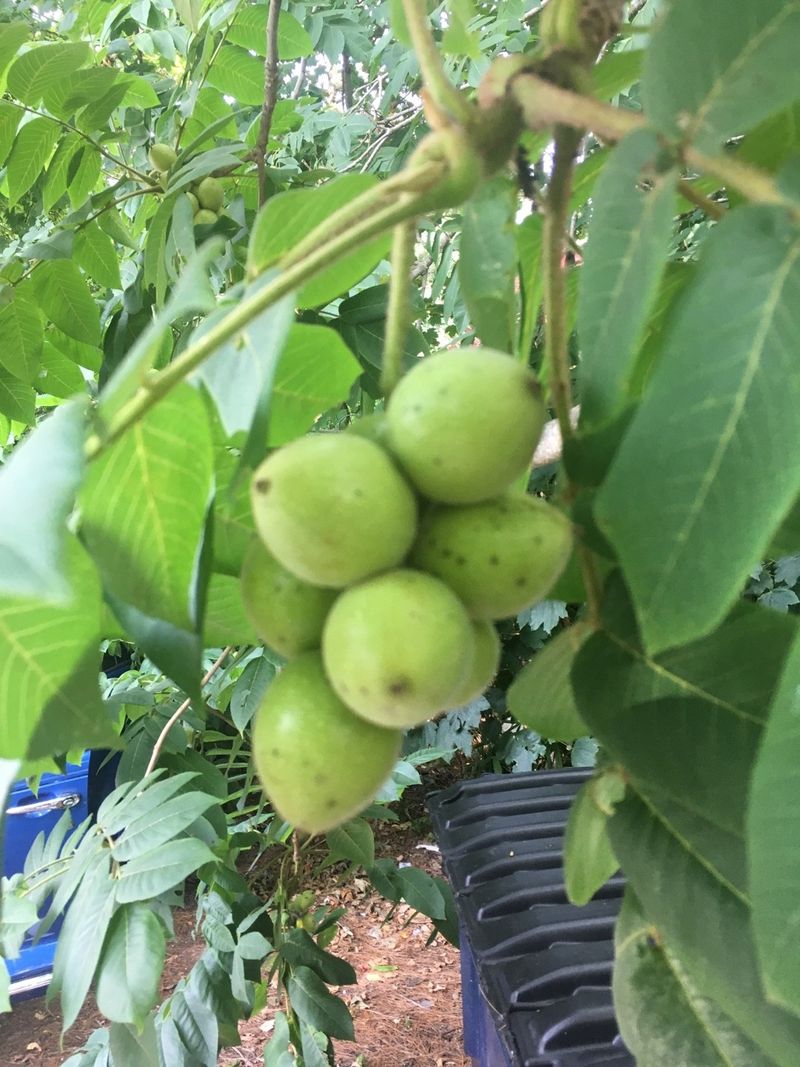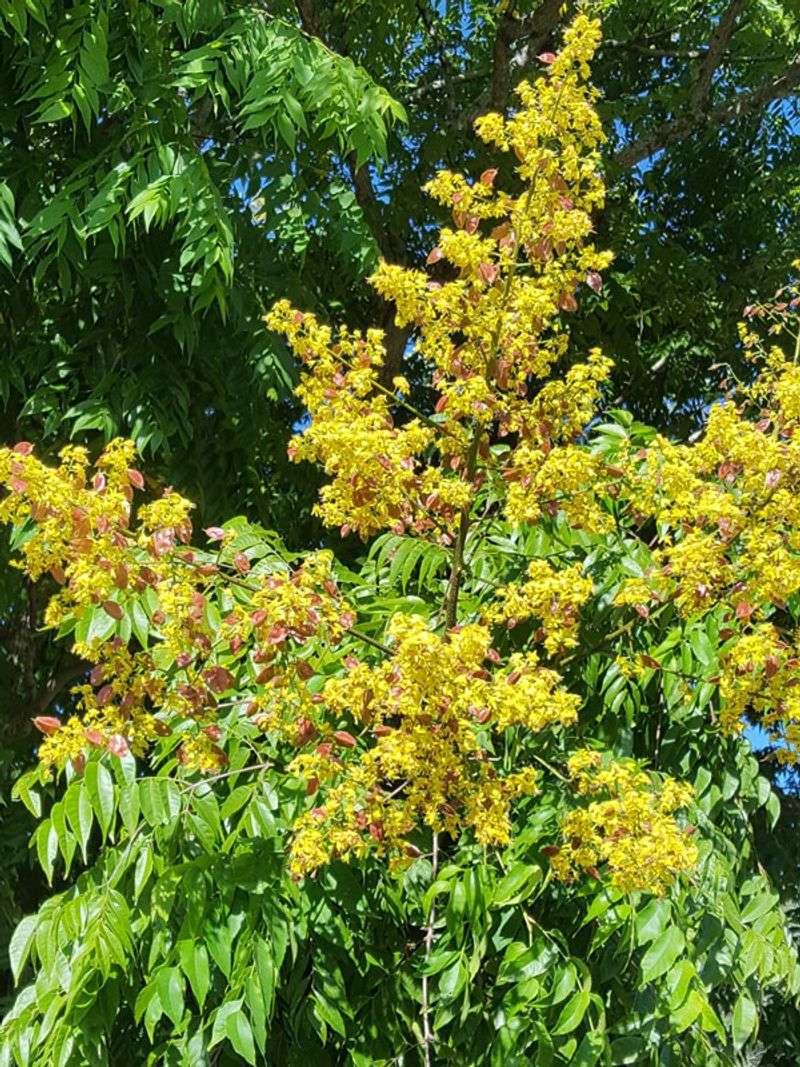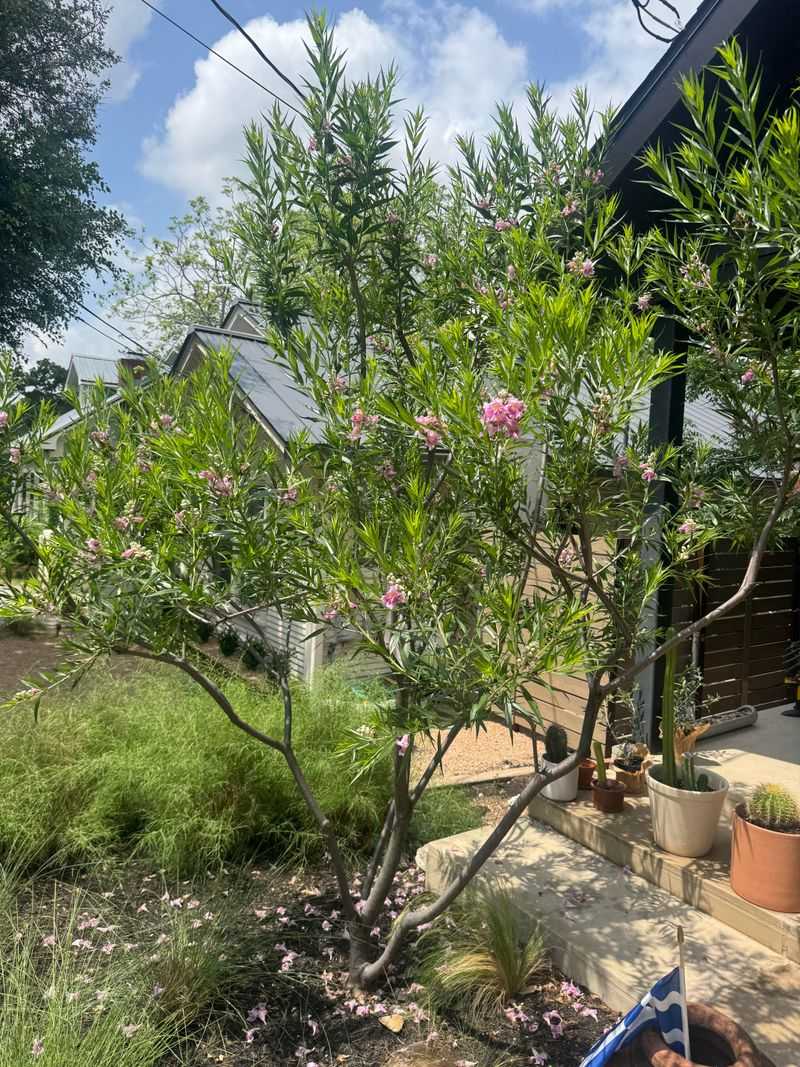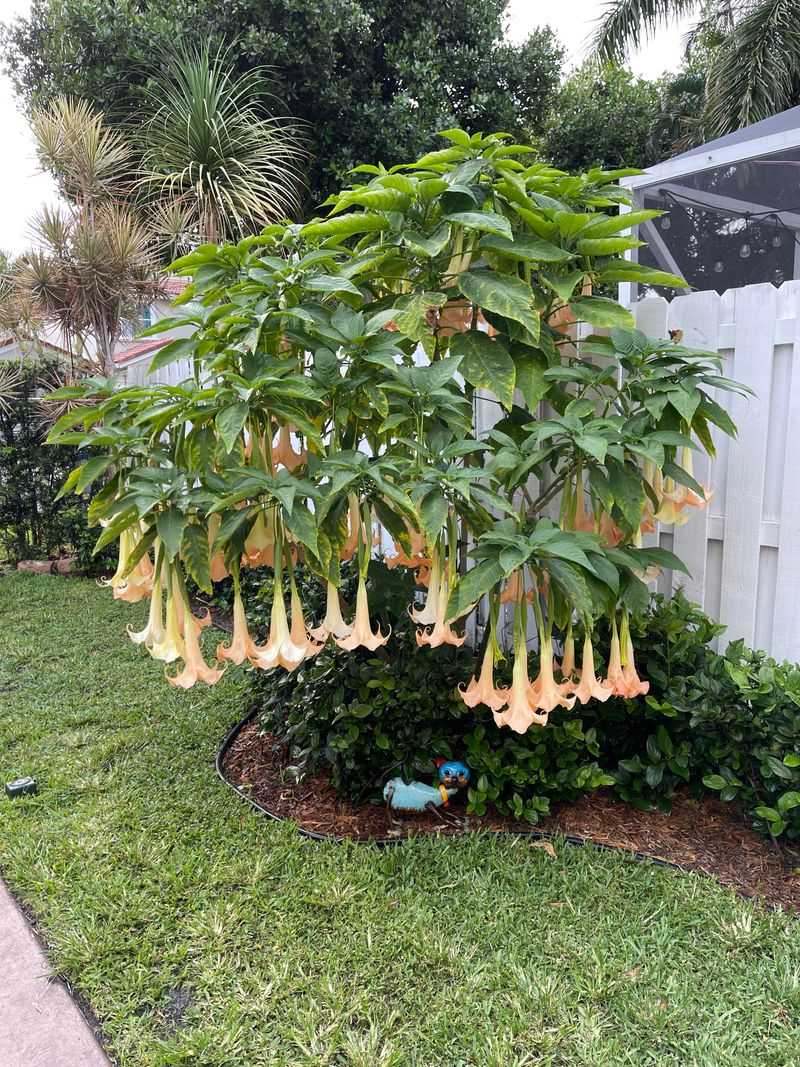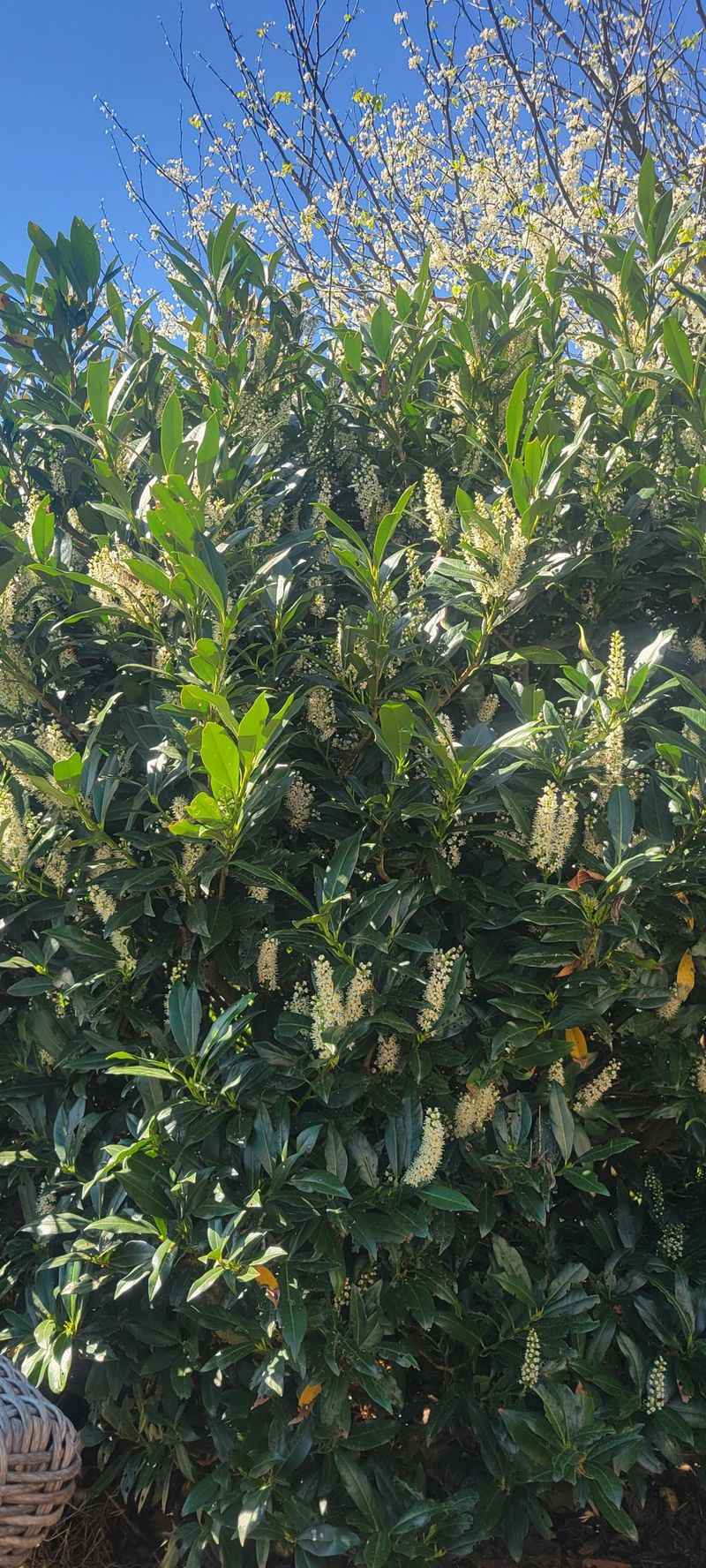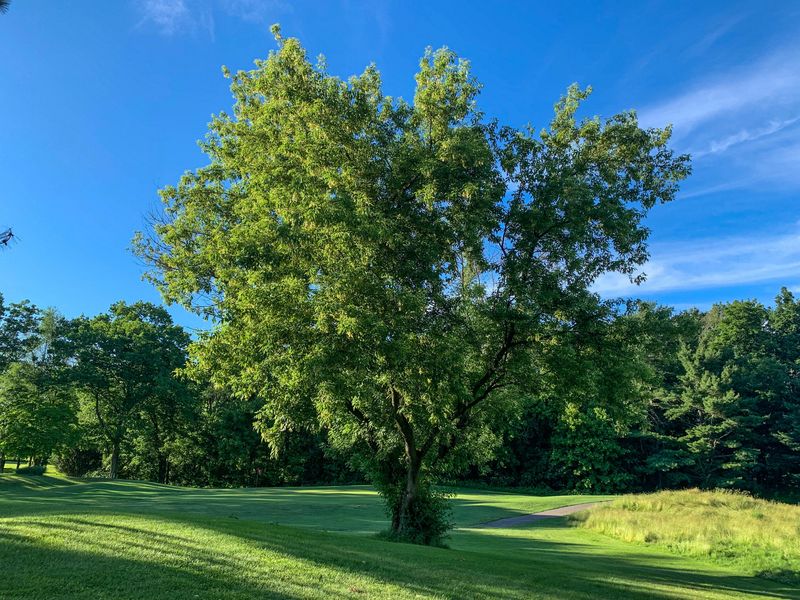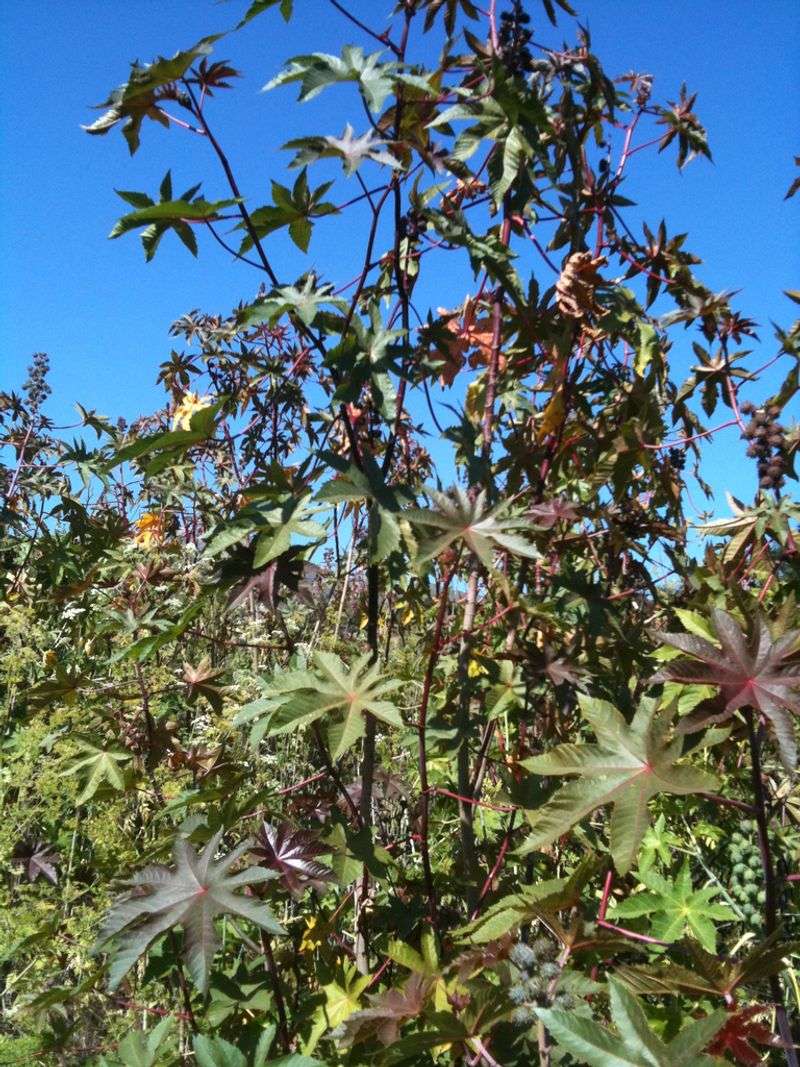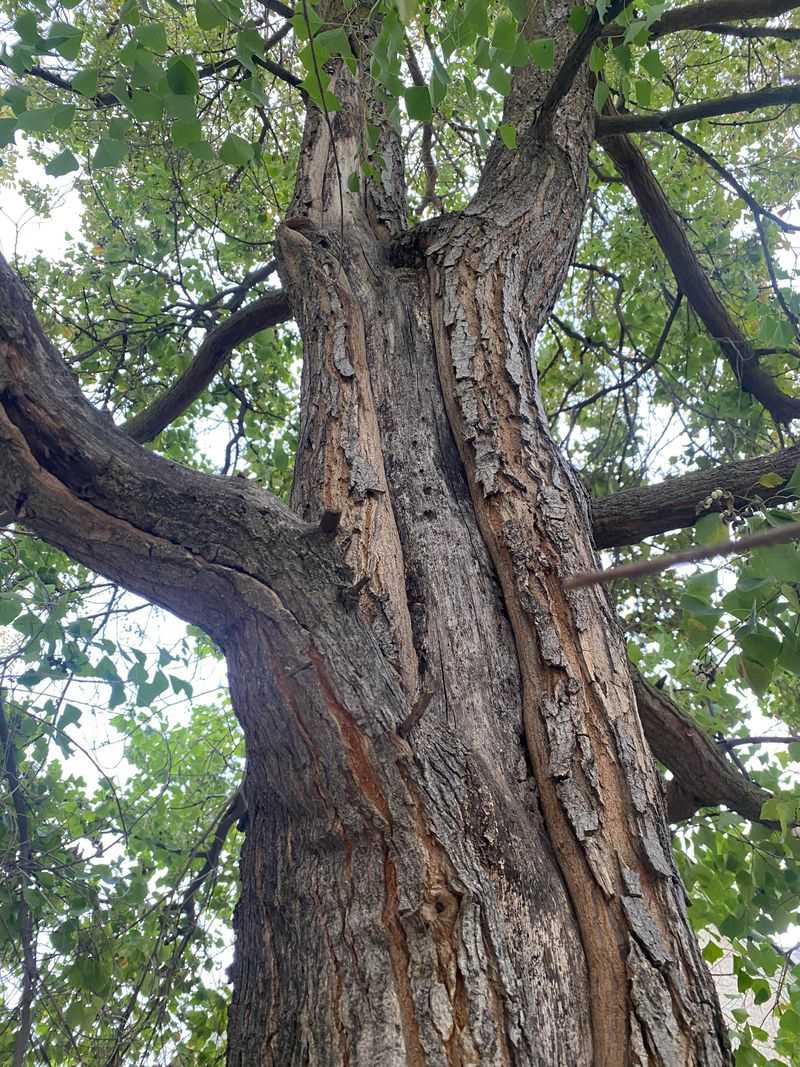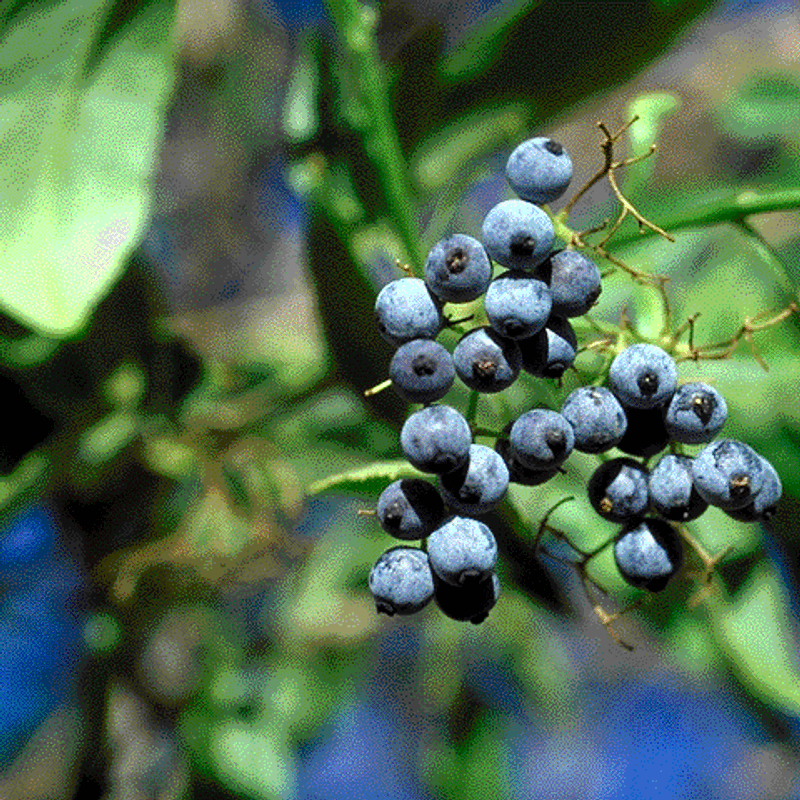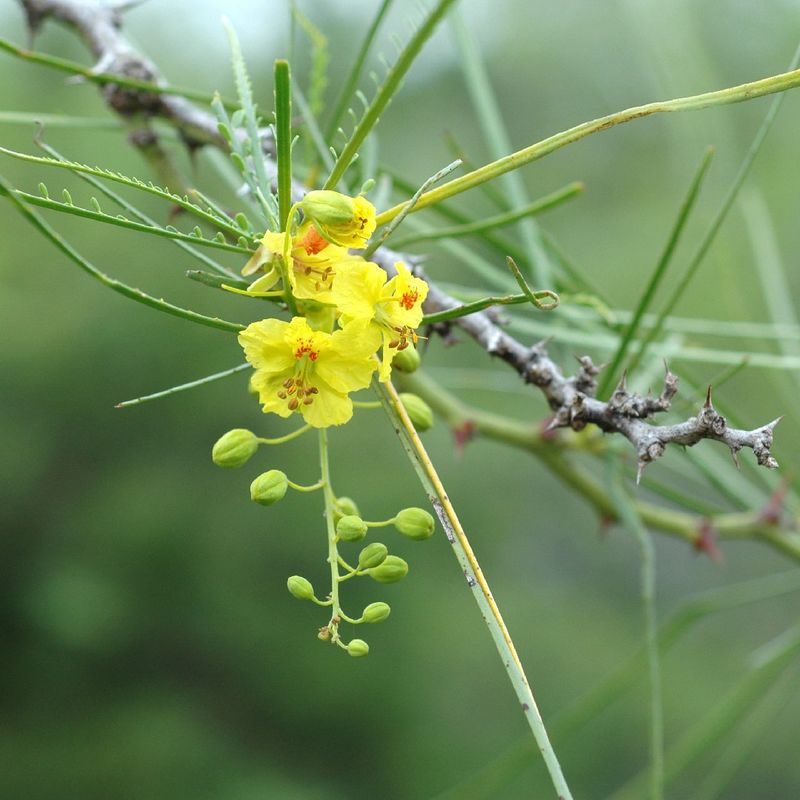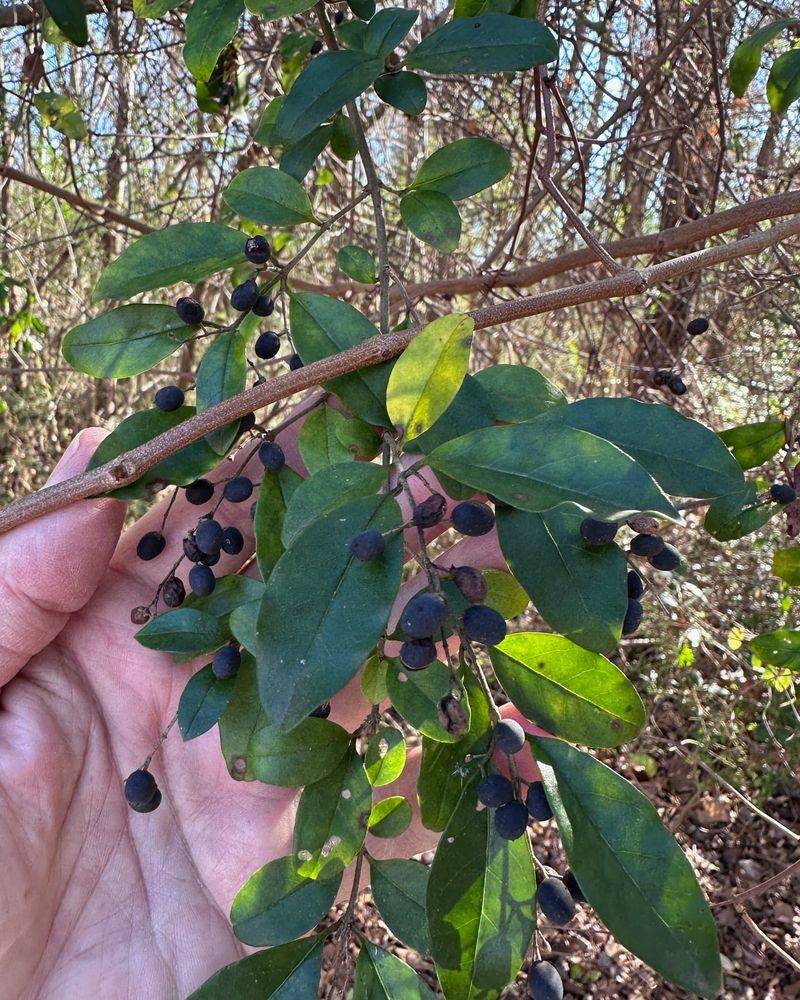Texas yards brim with gorgeous trees that offer a cool escape from the blazing summer sun. They’re the heroes of backyard shade—but a few of these favorites come with hidden dangers.
Some trees bear toxic berries or release chemicals that quietly wreak havoc in the soil. What looks lovely could be risky for kids, pets, and nearby plants.
The surprise? Many homeowners may have been growing these silent troublemakers for years. It’s time to take a closer look at what’s really thriving in your yard.
1. Texas Mountain Laurel
Every part of this popular ornamental contains cytisine, a compound that causes severe stomach pain, vomiting, and even respiratory failure if ingested. The bright red seeds are particularly dangerous as they attract curious children and pets.
Commonly planted in Hill Country landscapes for their gorgeous purple blooms and drought tolerance, these small trees thrive in rocky limestone soils. They’re especially popular around San Antonio and Austin.
My sister’s Texas Mountain Laurel dropped seeds all over her patio last spring. Her toddler nearly put one in his mouth before she noticed—a close call that prompted her to replace it with a non-toxic alternative.
2. Chinaberry Tree
Golden yellow berries might look tempting, but they contain neurotoxins that affect the nervous system. Just a handful can be fatal to small children, while horses and dogs experience severe digestive distress after nibbling the fruits.
Originally brought to Texas as an ornamental shade tree, Chinaberries have naturalized throughout East Texas. They spread aggressively along fence lines and creek beds, often showing up uninvited.
During my first year in Dallas, I battled three volunteer Chinaberry saplings that popped up near my garden. The previous homeowner had removed the parent tree but missed the extensive root system.
3. Oleander
Though technically a large shrub that can grow to tree-size, oleanders contain cardiac glycosides so potent that ingesting just one leaf can be fatal. Even the smoke from burning oleander branches can cause severe respiratory issues.
These evergreen plants with pink, white, or red flowers are commonly used as privacy screens along South Texas highways and coastal properties. Salt-tolerant and nearly indestructible, they withstand harsh Gulf Coast conditions.
After Hurricane Harvey, several Houston residents fell ill after accidentally burning oleander debris during cleanup. Ranch owners in the Coastal Bend region routinely warn new neighbors about keeping livestock away from these deceptively pretty plants.
4. Black Walnut
While the nuts are edible for humans, Black Walnut trees produce juglone, a natural chemical that’s toxic to many plants and some animals. Horses exposed to walnut shavings in bedding can develop potentially fatal laminitis within hours.
Found naturally in East Texas bottomlands, these massive shade trees have been planted in yards across North Texas. Their extensive root systems can poison neighboring gardens up to 80 feet away.
A gardening buddy in Tyler couldn’t figure out why her tomatoes kept dying until we realized her neighbor’s Black Walnut was the culprit. She finally had success after switching to raised beds with barriers against the toxins.
5. Yew
Nearly every part of yew trees contains taxine alkaloids that cause cardiac arrest without warning symptoms. The bright red berries with exposed black seeds are particularly deceiving—the flesh isn’t toxic, but the seeds inside definitely are.
English and Japanese yews are commonly used for foundation plantings around older Texas homes, especially in Dallas-Fort Worth’s established neighborhoods. Their dense evergreen foliage creates perfect hedges and topiary shapes.
Last winter, a neighbor’s prize hunting dog died after chewing yew branches that had been pruned and left in a pile. The veterinarian said it’s one of the most common plant poisonings they see around the holidays when people decorate with fresh greenery.
6. Golden Rain Tree
The seeds and seedpods contain toxins that cause gastrointestinal distress in children and pets. While rarely fatal, the vomiting and diarrhea can be severe enough to require medical attention, especially in smaller animals.
Popular for their spectacular yellow flowers and unusual paper lantern-like seed pods, these trees are common in planned communities around Houston and Austin. They drop massive amounts of litter throughout the year.
During my neighborhood’s garden tour, three different homeowners complained about their Golden Rain Trees. Beautiful for three weeks, problematic the other 49—yet nobody wants to remove such an expensive specimen that provides such nice shade.
7. Desert Willow
Though less toxic than others on this list, Desert Willow seed pods and flowers contain compounds that cause digestive upset in dogs and cats. The long, slender seed pods are particularly problematic when pets chew them as toys.
Native to West Texas and the Edwards Plateau, these drought-tolerant trees have been increasingly planted in xeriscaped yards across the state. Their trumpet-shaped pink or purple flowers attract hummingbirds and butterflies.
After installing a Desert Willow in my San Antonio yard, I had to fence it off during its first few seasons. My retriever kept bringing the seed pods inside, chewing them, and then throwing up on the carpet—exactly where you’d expect.
8. Angel’s Trumpet
All parts contain potent tropane alkaloids that cause hallucinations, paralysis, and death. Just brushing against the leaves and getting sap on your skin can cause irritation, while ingestion has led to numerous fatalities.
These small trees with pendulous, trumpet-shaped flowers are popular in protected areas of Central Texas gardens. The fragrant blooms come in white, yellow, pink, or peach, often scenting entire neighborhoods in the evening.
A master gardener friend in New Braunfels wears long sleeves and gloves just to prune her Angel’s Trumpet. After her grandson visited, she replaced it with a similar but safer native plant—the risk simply wasn’t worth the beauty.
9. Cherry Laurel
The leaves, bark, and seeds contain cyanogenic compounds that release hydrogen cyanide when chewed. Wilted leaves are particularly dangerous to livestock and pets, causing respiratory failure, convulsions, and death within hours of ingestion.
Widely planted as screening hedges and small shade trees throughout East and Central Texas, Cherry Laurels produce fragrant white flower spikes followed by small black berries. Birds spread the seeds everywhere.
After a spring storm knocked branches off my neighbor’s Cherry Laurel, his goats got into the wilted foliage before he could clean it up. The emergency vet bill convinced him to replace it with a non-toxic native alternative better suited for his small farm.
10. Boxelder
While the tree itself isn’t highly toxic, its seeds and seedlings contain hypoglycin A, which can cause potentially fatal muscle damage in horses and occasionally other livestock. The infamous boxelder bugs that swarm these trees can also become household pests.
Native to creek bottoms across Texas, these fast-growing maples volunteer readily in urban yards, especially in North and East Texas. They’re often mistaken for harmless native trees until they mature and create problems.
Several ranchers in the Hill Country have lost horses to “Seasonal Pasture Myopathy” before realizing boxelder seedlings were the culprit. The seedlings are especially dangerous in fall when other pasture forage becomes limited.
11. Castor Bean
Contains ricin, one of the most potent plant toxins known. A single seed can kill a child, and just a few can be fatal to adults. The spiny red seed pods and large, star-shaped leaves make this plant dangerously attractive to children.
Often grown as ornamental “trees” in South Texas landscapes, castor beans can reach 15 feet tall in a single season. Their tropical appearance and fast growth make them popular despite their toxicity.
During a garden club meeting in Corpus Christi, I was shocked to see these planted around a community playground. After sharing information about their dangers, the maintenance crew removed them the following week.
12. Chinese Tallow
All parts contain toxins that irritate the digestive tract, but the waxy white seeds are especially dangerous to children and pets. Just a few can cause severe vomiting, diarrhea, and weakness lasting for days.
Originally introduced for soap-making and ornamental use, these fast-growing trees now infest wetlands throughout East and Coastal Texas. Their brilliant red fall foliage has unfortunately made them popular in landscaping.
Growing up in Houston, we called these “popcorn trees” because of their white seeds. My grandmother would scold us for playing with the “popcorn,” warning they’d make us sick—she was right, though I didn’t appreciate her wisdom until I became a parent myself.
13. Lantana (Tree Form)
The unripe green berries contain pentacyclic triterpenoids that cause severe liver and kidney damage if ingested. Children attracted to the colorful flowers and berries are at highest risk, as are pets that chew the stems.
While typically grown as shrubs, lantanas in South Texas often develop into small trees with woody trunks up to 8 feet tall. Their multi-colored flower clusters bloom year-round in frost-free areas, making them irresistible to butterflies and hummingbirds.
A friend’s tree-form lantana in McAllen grew so large it created a beautiful butterfly garden centerpiece. Unfortunately, her granddaughter sampled the berries during a visit, resulting in an emergency room trip and a very prompt removal of the plant.
14. Mexican Elder
Unlike common elderberry, Mexican elder’s unripe berries, leaves, bark, and roots contain cyanogenic glycosides that can cause nausea, vomiting, and diarrhea. Only the fully ripened berries are considered safe after cooking.
Frequently planted in Central and South Texas landscapes for their lacy white flowers and bird-attracting berries. These fast-growing native trees thrive in the rocky limestone soils around San Antonio and the Hill Country.
During a native plant workshop in Boerne, a local herbalist shared how her grandmother made elderberry syrup but strictly warned against using any green berries or other plant parts. “She’d say you’d be in the outhouse for days if you didn’t follow her rules.”
15. Jerusalem Thorn
Though not highly toxic when ingested, the sharp thorns contain irritating compounds that cause painful swelling and inflammation. Puncture wounds from the thorns can lead to serious infections that resist antibiotic treatment.
Increasingly popular in water-wise landscapes across Central and West Texas, these airy trees with bright green bark and feathery foliage create dappled shade in desert gardens. The yellow flowers attract beneficial insects.
During a visit to a Midland xeriscape demonstration garden, the master gardener pointed out their Jerusalem Thorn. “Beautiful but brutal—we keep it behind this fence because three different visitors ended up needing medical attention after brushing against it.”
16. Privet
The leaves and blue-black berries contain terpenoid glycosides that cause gastrointestinal distress, weakness, and in severe cases, cardiac problems. Birds eat the berries and spread seeds everywhere, creating invasive thickets.
Often grown as hedges, privets frequently escape cultivation and form tree-like specimens in East Texas woodlands. Their dense foliage provides privacy but harbors mosquitoes and crowds out native plants.
When I bought my home in Nacogdoches, the backyard was overrun with privet trees up to 20 feet tall. Removing them was exhausting work, but the native birds and butterflies returned once we replanted with non-toxic native alternatives.


